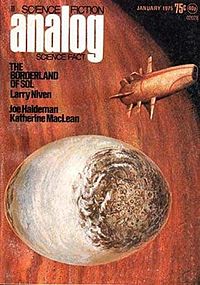Find out the latest thinking about our universe.
-
bystander
- Apathetic Retiree
- Posts: 21577
- Joined: Mon Aug 28, 2006 2:06 pm
- Location: Oklahoma
Post
by bystander » Mon Dec 15, 2014 6:00 pm
Stretched-out solid exoplanets
Royal Astronomical Society | 2014 Dec 15
[attachment=0]Sun_planet[1].png[/attachment]
Astronomers could soon be able to find rocky planets stretched out by the gravity of the stars they orbit, according to a group of researchers in the United States. The team, led by Prabal Saxena of George Mason University, describe how to detect these exotic worlds in a paper in the journal
Monthly Notices of the Royal Astronomical Society.
Since the first discovery in 1993, more than 1800 planets have been found in orbit around stars other than our Sun. These 'exoplanets' are incredibly diverse, with some gaseous like Jupiter and some mostly rocky like the Earth. The worlds also orbit their stars at very different distances, from less than a million km to nearly 100 billion km away. Planets that are very close to their stars experience harsh conditions, often with very high temperatures (>1000 degrees Celsius) and significant stretching from the tidal forces resulting from the stellar gravitational field. This is most obvious with planets with a large atmosphere (so-called 'hot Jupiters') but harder to see with rockier objects.
Prabal and his team modelled cases where the planets are in orbit close to small red dwarf stars, much fainter than our Sun, but by far the most common type of star in the Galaxy. The planets’ rotation is locked, so the worlds keep the same face towards the stars they orbit, much like the Moon does as it moves around the Earth. According to the scientists, in these circumstances the distortion of the planets should be detectable in transit events, where the planets moves in front of their stars and blocks out some of their light. ...
The Observational Effects and Signatures of Tidally Distorted Solid Exoplanets - Prabal Saxena, Peter Panka, Michael Summers
-
Attachments
-
![Sun_planet[1].png (1.95 MiB) Viewed 5607 times An artist’s impression of a stretched rocky planet in orbit around a red <br />dwarf star, so close to the star, there is a difference in the strength of the <br />gravitational field on each side of the planet, stretching it significantly. <br />Credit: Shivam Sikroria.](./download/file.php?id=15963&t=1&sid=048a45269fdce640269fc1196d1ce2e4)
- An artist’s impression of a stretched rocky planet in orbit around a red
dwarf star, so close to the star, there is a difference in the strength of the
gravitational field on each side of the planet, stretching it significantly.
Credit: Shivam Sikroria.
Know the quiet place within your heart and touch the rainbow of possibility; be
alive to the gentle breeze of communication, and please stop being such a jerk. — Garrison Keillor
-
BDanielMayfield
- Don't bring me down
- Posts: 2524
- Joined: Thu Aug 02, 2012 11:24 am
- AKA: Bruce
- Location: East Idaho
Post
by BDanielMayfield » Thu Dec 18, 2014 2:41 am
I don't doubt that tidally elongated planets exist, but tides couldn't produce a view like what is shown in the illustration, because the planet's tidal bulges should be aligned with the line passing though the centers of both star and planet. During a near central transit as shown the bulges would barely show, if at all.
A scene like the illustration could exist, but it would be due to extremely fast planetary rotation, not extreme tides.
Bruce
Just as zero is not equal to infinity, everything coming from nothing is illogical.
-
geckzilla
- Ocular Digitator
- Posts: 9180
- Joined: Wed Sep 12, 2007 12:42 pm
- Location: Modesto, CA
-
Contact:
Post
by geckzilla » Thu Dec 18, 2014 3:28 am
Yeah, it does seem wrong. If I were in the mood, I'd go through the paper's equations and draw a more accurate picture... a simple solution would be to move the planet to the right or left of the star. At least then the axis would be correct.
Just call me "geck" because "zilla" is like a last name.
-
rstevenson
- Quis custodiet ipsos custodes?
- Posts: 2705
- Joined: Fri Mar 28, 2008 1:24 pm
- Location: Halifax, NS, Canada
Post
by rstevenson » Thu Dec 18, 2014 1:40 pm
Larry Niven, in his series of Known Space stories, invented a planet called Jinx.
Jinx is an oblong moon, pulled out of its round shape by its proximity to Primary, a gas giant orbiting the star Sirius. The equatorial region is shrouded in high-pressure gas, ... . The ends stick out of the atmosphere entirely, providing centers for vacuum-based industry and spaceports. Between the ends and the equator are two bands of habitable living space.
Here it is, on the cover of Analog magazine.

- 200px-Analog_jan_1975.jpg (20.33 KiB) Viewed 5565 times
Rob